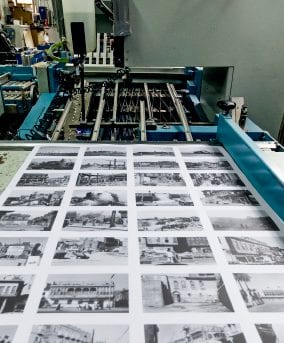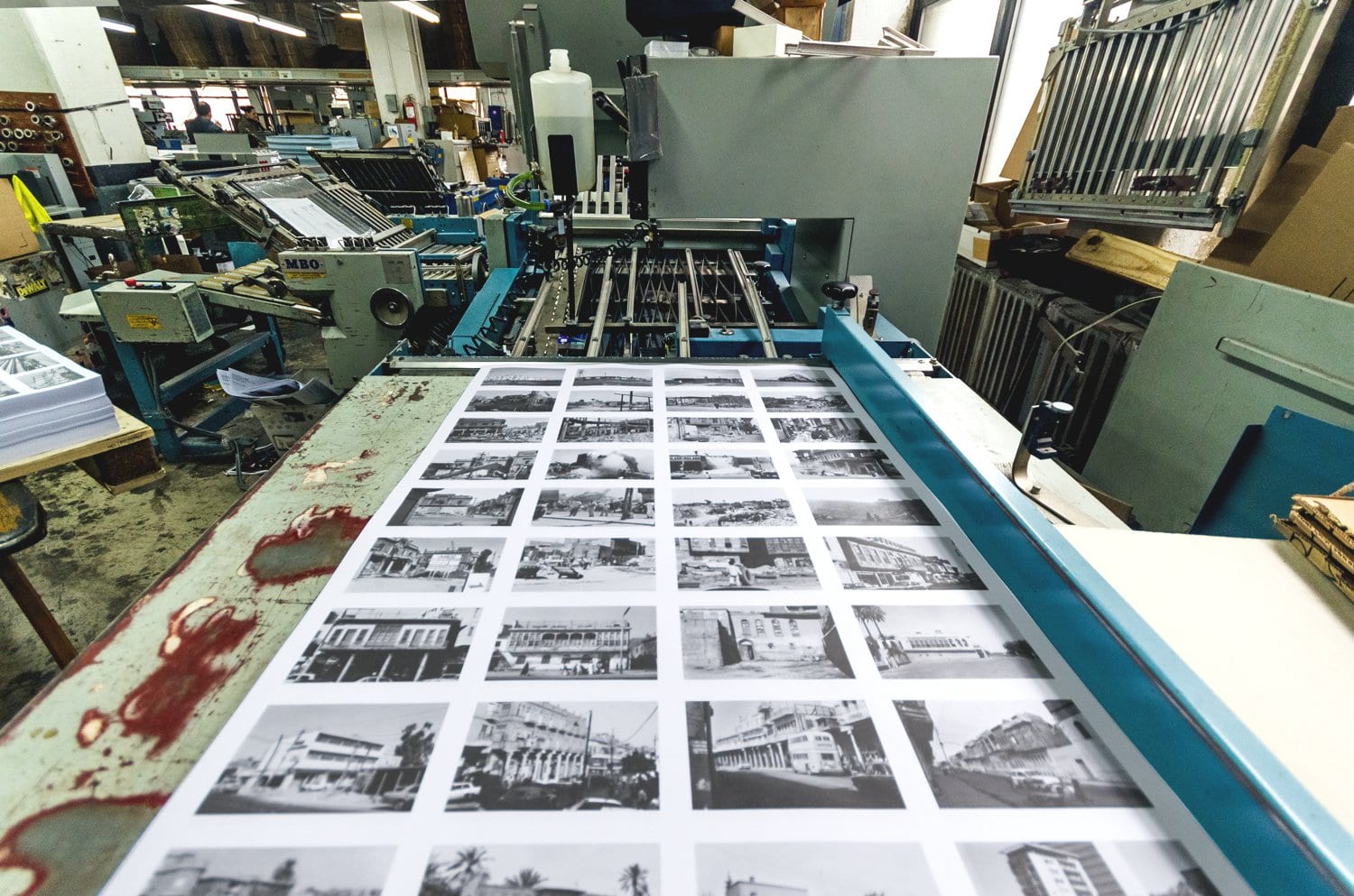The Best NYC Print Cutting and Trimming Services
Cutting and trimming are what occurs during the post printing and finishing process. Although this process may seem straightforward, there is a real skill and process behind it. During the binding and finishing operations, cutting and trimming is done in order to reduce large press sheets down to a specific trim size. This includes the process of separating pages that have been stuck to a single sheet, and it also helps to remove extraneous edges. The cutting process is different from the trimming process because cutting means separating pages that were printed together, and trimming is the process of removing excess paper from the sheet edges.
We use High Quality Printer Cutter Machines on All our Projects
Most of our cutting and trimming is done using a guillotine cutter. This is a large device with a flat bed upon which the paper to be cut is stacked, and a long, sharp knife. Depending upon the project, the knife is pressed through the paper either manually or mechanically. A guillotine cutter can also be made from a cutting stick or a piece of wood embedded in the cutting bed directly underneath the knife. Such a cutting stick creates a firm and resilient surface for the knife to press against. This creates a clean cut and prevents the blade from wearing out.
Varick Street Litho offers various specialty trimming services
Cutting different weights of paper has different requirements. Cutting lighter-weight paper sometimes means that the stack pulls sheets of paper from underneath the clamps. This creates upper sheets that are shorter than the lower lying layers. This is referred to as overcut. Oppositely, cutting harder paper stock, like cardboard, can create an undercut, which is caused by a lack of clamp pressure. In the book binding process, trimming can be performed with three-knife trimmers, which trim the three unbound book sides simultaneously.
VSL Print offers the Best New York Printer Trimming and Cutting Services
Varick Street Litho is at the cutting edge of binding. Serving both the local New York area and with the ability to serve local, national and global markets. Varick Street Litho houses an entire graphic design department, providing clients with unique, new material. We keep our clients engaged throughout each step of our creation process in order to ensure the project meets brand guidelines, captures their vision, and appeals to customers. Varick Street Litho has a creative graphic design team and we can bring your vision to life. We serve both the local New York area and with the ability to serve local, national and global markets. We specialize in Binding Services, Book Binding, Case Binding, Collating & Gathering, Folding, Imposition Layout. Mechanical Binding, Perfect Binding, Saddle Stitching, and much more.
Common FAQ
However, from a customer’s standpoint, there is a small difference between the two services; the main difference is how much we take verses how much we leave. For trims, we are cutting less and leaving more, while a cut is just the opposite
What is trimming in printing?
Cutting and Trimming. … Cutting is often differentiated from trimming in that cutting refers to the separation of pages that have been printed together, while trimming refers to the process of removing paper from around the edges of a sheet.
What’s the average book size?
The standard book size is six inches wide and nine inches tall (6″x9″). Your book will probably be cheapest to print, easiest to read, and easiest to sell (e.g., it’ll fit on bookstore shelves) in this size. Larger books are harder to hold, carry, or put on a shelf.
What size is paperback book?
The term B-format indicates a medium-sized paperback of 129 mm × 198 mm (5 1⁄8 in × 7 3⁄4 in). This size has been used to distinguish literary novels from genre fiction. In the U.S., books of this size are thought of as smaller trade paperbacks (see below).
What does it mean to cut the pages of a book?
Quick Brain Snack: books used to come with their pages uncut, meaning that the sheets that are folded to make the books aren’t sliced open on the top. You’d have to cut them open before reading. If you didn’t, everyone would know that you hadn’t actually read the book.
How do you cut a large paper straight?
Method 1 Cutting a Straight Line on Paper Using a Craft Knife
Gather your materials. …
Place the paper on a flat surface. …
Use a pencil to mark the start and end of your line. …
Place the ruler on the paper. …
Hold the ruler in place with one hand while cutting with the other. …
Erase the pencil marks you made in Step 3.
What is trim size book?
What is a Book’s Trim Size? Trim size is one of those terms we use frequently when talking about the dimensions of your printed book. The term comes from the fact that during the printing process the pages of the book first printed on large sheets which are folded, glued, and later “trimmed” to a specific size.
What is deckle edge book?
A deckle is a removable wooden frame or “fence” used in manual papermaking. In a related sense, it can also mean deckle edge paper—a type of industrially produced paper with rough cut edges used in the book trade.
What’s the difference between paperback and mass market paperback?
The only difference is the soft binding; the paper is usually of higher quality than that of a mass-market paperback, for example acid-free paper. Trade paperbacks are typically priced lower than hardcover books and higher than mass-market paperbacks.


